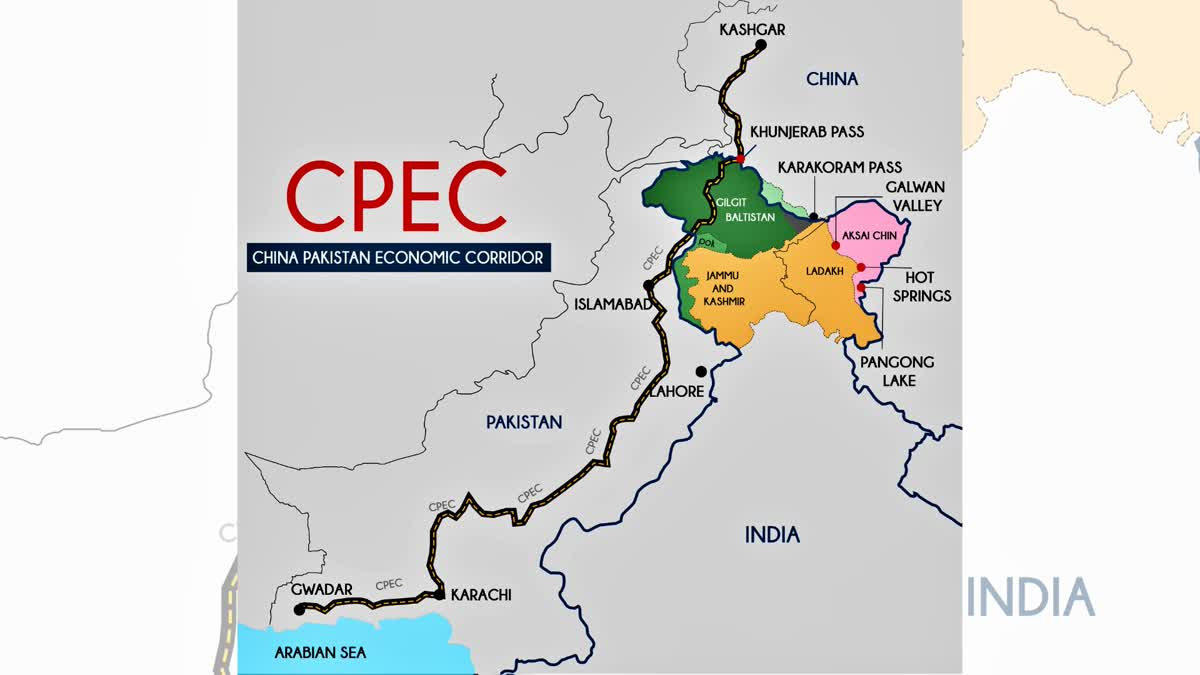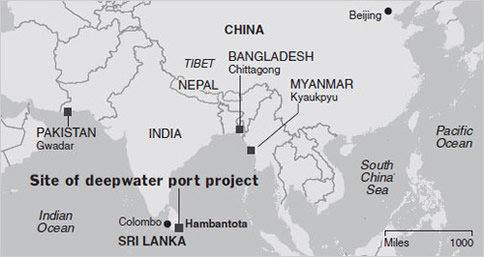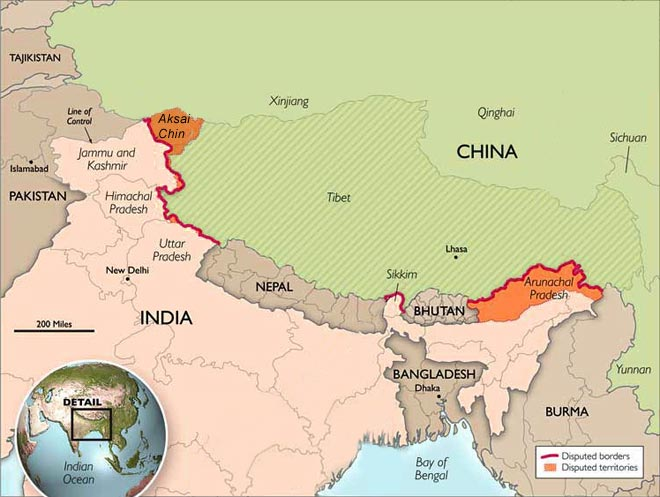International Relations
Balancing Growth and Rivalry with China
This editorial is based on “Jaishankar in China: A cooperative Beijing is desirable, but a less uncooperative one is India’s best bet” which was published in The Indian Express on 17/07/2025. The article brings into picture the cautious renewal of India-China ties post-Galwan through EAM Jaishankar’s visit, highlighting progress on trade but lingering border tensions.
For Prelims: Rare earth minerals, Asian Infrastructure Investment Bank , Kailash Mansarovar pilgrimage, Solar energy, Line of Actual Control, Xiaokang, China-Pakistan Economic Corridor, UN Security Council
For Mains: Strategic Importance of India-China Cooperation in Advancing India’s Development Trajectory, Key Issues Hindering Effective India-China Dialogue.
India’s External Affairs Minister S. Jaishankar's first visit to China since the 2020 Galwan standoff signals both nations' efforts to rebuild diplomatic ties on new foundations. While immediate trade issues like rare earth minerals export restrictions can be addressed quickly, the fundamental border question remains unresolved and sidelined. India faces the challenge of engaging a militarily superior neighbor while strengthening itself internally and preserving core interests. The emerging framework aims to ensure that "differences should not become disputes, nor should competition ever become conflict."
What is the Strategic Importance of India-China Cooperation in Advancing India’s Development Trajectory?
- Economic Growth and Trade Linkages: India-China cooperation is crucial for India’s economic growth, as China remains one of its largest trading partners.
- Despite political tensions, bilateral trade between the two countries reached $118.4 billion in 2023-24, making China India’s largest trading partner ahead of the US.
- This trade includes critical imports like telecom parts, pharmaceutical ingredients, and advanced technology components, essential for India’s manufacturing and digital sectors.
- Technology Transfer and Manufacturing: China’s technological dominance, particularly in manufacturing, can significantly boost India's industrial base.
- India’s “Make in India” initiative seeks to enhance domestic manufacturing, but China’s advanced supply chain and manufacturing capabilities are indispensable for accelerating this goal.
- In 2023, India launched PLI schemes for sectors like electronics, but despite these efforts, the slow pace of growth in domestic manufacturing points to the crucial need for Chinese investment and expertise in key areas such as semiconductor production and electronics.
- China has invested in 18 of India's leading 30 enterprises and start-ups (entrepreneurial initiatives valued at more than $1 billion).
- The total value of Chinese investments in Indian startups between 2015 to 2020 is approximately USD 4 billion.
- Infrastructure and Connectivity Enhancement: The need for infrastructural development in India calls for closer cooperation with China, particularly in railways, roads, and urban development.
- Currently, India is its largest borrower in China-led Asian Infrastructure Investment Bank and second-largest shareholder, owning around 7.5% voting power.
- Out of 202 projects approved by the AIIB between 2016 to 2022, India hosts the most (39).
- Chinese cooperation on projects like the trans-border Kailash Mansarovar pilgrimage shows that both sides can collaborate on regional connectivity.
- Currently, India is its largest borrower in China-led Asian Infrastructure Investment Bank and second-largest shareholder, owning around 7.5% voting power.
- Environmental and Climate Cooperation: India and China can drive meaningful collaboration on climate change and environmental issues, vital for both countries’ sustainable development.
- In recent years, both nations have recognized the urgency of addressing global environmental concerns, with China leading in renewable energy investments and India advancing its clean energy targets.
- China’s leadership in solar energy technology is crucial for India, which is aiming to meet ambitious renewable energy goals of 500 GW by 2030.
- China’s massive investment in green technology could support India’s transition, especially in sectors like electric vehicles and solar power infrastructure.
- Strategic Economic Decoupling and Supply Chain Resilience: The geopolitical tensions surrounding global trade and technology supply chains have underscored the importance of India-China cooperation in ensuring economic resilience.
- Both India and China are integral to the global supply chain, particularly in sectors like technology, pharmaceuticals, and rare earth minerals.
- As the world moves towards a potential decoupling of global supply chains due to geopolitical factors—such as the US-China rivalry—India's cooperation with China can play a critical role in mitigating the risks associated with over-dependence on any single nation.
- By leveraging China's advanced manufacturing ecosystem and technological expertise, India can diversify its own supply chains, ensuring access to critical components, such as semiconductors and electronics, without falling into the trap of excessive reliance on Western nations.
- Energy Security and Regional Resource Management: The energy security landscape in Asia, particularly with respect to oil, natural gas, and renewable energy, is increasingly shaped by the complex interdependencies between India and China.
- Both countries are major consumers of energy resources, yet they also face challenges in securing stable energy supplies amidst fluctuating global prices and shifting geopolitical power dynamics.
- India and China could cooperate to ensure long-term energy security in the region through collaborative projects in areas like cross-border energy grids, resource exploration in the Indian Ocean, and even joint investments in alternative energy sources such as nuclear, solar, and wind.
- Geostrategic Influence and Multilateral Engagement: India-China cooperation holds significant geostrategic importance for both countries, particularly in the context of shifting global power dynamics.
- As two major Asian powers, their relationship will play a pivotal role in shaping the future of the Indo-Pacific region.
- Collaborative engagement between India and China can provide both nations with enhanced leverage in multilateral institutions like the G20, BRICS, and the Shanghai Cooperation Organization (SCO).
What are the Key Issues Hindering Effective India-China Dialogue?
- Border Disputes and Militarization: The unresolved border issue remains the most significant barrier to effective dialogue between India and China.
- Despite multiple rounds of disengagement talks, tensions persist along the Line of Actual Control (LAC), especially in areas like Eastern Ladakh and Arunachal Pradesh.
- The Xiaokang or “well-off villages” are part of China’s strategic border infrastructure push to strengthen its frontier presence. And India is also investing heavily in infrastructure development, such as roads and surveillance systems, to counter China’s stronger military presence.
- The absence of a lasting resolution creates a fundamental impasse in bilateral relations.
- China’s Strategic Partnerships with Pakistan: China’s deepening relationship with Pakistan complicates its ties with India, particularly in terms of security and regional influence.
- The China-Pakistan Economic Corridor (CPEC) and military cooperation between Beijing and Islamabad have been viewed as a direct challenge to India’s strategic interests.

- In May 2025, China backed Pakistan’s stance during the Pahalgam terror attack, signaling its alignment with Pakistan over India’s security concerns.
- Pakistan being heavily dependent on Chinese military and economic aid, India sees this as an obstacle to normalizing relations, especially as China shields Pakistan-backed terrorists in international forums like the UN.
- The China-Pakistan Economic Corridor (CPEC) and military cooperation between Beijing and Islamabad have been viewed as a direct challenge to India’s strategic interests.
- Trade Imbalance and Economic Dependency: The growing trade deficit between India and China is a critical issue hindering constructive dialogue.
- In FY2023-24, India's imports from China totaled $101.7 billion, far exceeding its exports of $16.67 billion, creating a $99.2 billion trade deficit.
- Despite efforts to reduce dependence through initiatives like “Make in India,” India remains reliant on China for vital imports such as electronics, active pharmaceuticals, and telecom components.
- This economic imbalance limits India’s bargaining power and fosters dissatisfaction, particularly as India looks to reduce its vulnerability to Chinese economic leverage.
- China’s Expansionist Policies and Regional Influence: China’s assertive policies in the Indian Ocean and its Belt and Road Initiative (BRI) further complicate India-China relations.
- India’s concerns about China’s increasing military and economic presence in South Asia, especially in Sri Lanka, Nepal, and the Maldives, highlight the growing strategic competition.
- China's control over key ports in Pakistan (Gwadar), Sri Lanka (Hambantota), and Myanmar (Kyaukpyu) creates an encirclement scenario for India.

- This regional power struggle underscores the broader geopolitical rivalry, with China seeking to expand its influence, often at the expense of India’s strategic interests.
- China's proposed hydropower project on the Yarlung Tsangpo poses a 'water bomb' threat to India, sparking concerns and calls for action.
- China’s Aggressive Stance in Multilateral Forums: China’s growing influence in multilateral forums, often at odds with India’s interests, exacerbates tensions between the two nations.
- China has blocked India’s efforts to gain a permanent seat on the UN Security Council, despite broad international support for India’s bid.
- Moreover, China’s veto power has been used to shield Pakistan in the United Nations, particularly on issues related to terrorism.
- These actions contribute to the perception in India that China is undermining its global aspirations, thereby making effective dialogue difficult as both countries compete for regional and global influence.
- Inconsistent Diplomatic Approaches and Mistrust: A fundamental issue between India and China is the lack of consistent diplomatic engagement and the growing mistrust stemming from frequent shifts in both countries’ approaches.
- While India calls for a resolution based on peace and respect for the LAC, China often downplays the border issue and focuses on trade and economic cooperation.
- China has ongoing border disputes with several neighboring countries, and even tensions with nations it doesn't directly border, creating strategic uncertainty for India.
- The continued divergence in their approach to core issues fosters skepticism and undermines meaningful cooperation.
- While India calls for a resolution based on peace and respect for the LAC, China often downplays the border issue and focuses on trade and economic cooperation.
What Measures can India Adopt to Extend Cooperation with China?
- Focused Dialogue on Border Management and Confidence-Building: India should intensify its diplomatic engagements with China through dedicated, consistent talks on border management.
- By expanding the existing mechanisms like the "Corps Commander-level talks" and "Working Mechanism for Consultation and Coordination" (WMCC), India can ensure that peace and tranquility are maintained along the Line of Actual Control (LAC).
- This would include creating more no-patrol zones, establishing crisis management protocols, and setting up real-time communication channels between the military establishments to avoid misunderstandings or escalations.
- Economic Engagement through Trade Diversification: India should push for a more balanced trade relationship with China by negotiating bilateral trade frameworks that focus on diversifying exports beyond raw materials, promoting technology and high-value sectors.
- Furthermore, India can strategically utilize China's technological expertise to build domestic capabilities in high-tech industries such as 5G and artificial intelligence without compromising on security.
- Strengthening People-to-People Ties and Cultural Diplomacy: Cultural and people-to-people exchanges play a crucial role in fostering long-term bilateral relations.
- India should ramp up diplomatic and academic collaborations with China, focusing on collaborative research, educational exchange programs, and cultural initiatives.
- A stronger emphasis on soft diplomacy, such as academic institutions engaging in joint projects, arts festivals, and tourism initiatives, could alleviate mistrust and build mutual understanding.
- Joint Initiatives for Regional Development and Connectivity: India should explore regional cooperation initiatives with China that focus on infrastructure development and connectivity, especially in South Asia.
- By participating in mutually beneficial projects like cross-border transport corridors, energy grids, and clean energy partnerships, India can leverage China’s expertise and funding while maintaining strategic autonomy.
- Technology and Innovation Partnerships with Strategic Safeguards: India should engage China in joint research and development (R&D) ventures in emerging technologies such as quantum computing, renewable energy, and biotechnology, while ensuring robust safeguards to protect sensitive technologies.
- Establishing collaborative frameworks for innovation, with transparency and intellectual property protections, would enable India to benefit from China’s technological advancements without compromising national security.
- Environmental Collaboration and Joint Green Initiatives: India can extend cooperation with China by joining forces on global environmental initiatives, particularly in combating climate change and transitioning to renewable energy.
- Initiating joint projects on carbon reduction technologies, electric vehicles, and solar energy development could position both countries as leaders in sustainable development. By aligning their efforts on green technology, India and China can strengthen bilateral ties, share best practices, and influence global environmental policies, all while safeguarding national interests in the process.
- Digital Diplomacy and Cybersecurity Cooperation: Given the growing importance of digital infrastructure and cybersecurity, India should initiate cooperative frameworks with China focused on building secure digital economies.
- By creating bilateral cybersecurity dialogue platforms, both countries can address issues like data privacy, cybercrime, and the protection of critical infrastructure.
- At the same time, India must remain vigilant in safeguarding its digital sovereignty, ensuring that any cooperation in cyberspace adheres to national security protocols.
Conclusion:
India-China relations are shaped by the delicate balance of the four C’s — conflict, competition, cooperation, and containment. As EAM Jaishankar aptly stated, "Stable and constructive ties between India and China are not only to our benefit, but that of the world as well." By navigating their complex relationship with a focus on cooperation, both nations can leverage their strengths to foster economic growth, regional security, and sustainable development, contributing to a more balanced and multipolar world order.
|
Drishti Mains Question: Analyze the evolving dynamics of India-China relations in terms of conflict, competition, cooperation, and containment. How should India approach its future ties with China? |
UPSC Civil Services Examination Previous Year Question (PYQ)
Prelims
Q. “Belt and Road Initiative” is sometimes mentioned in the news in the context of the affairs of : (2016)
(a) African Union
(b) Brazil
(c) European Union
(d) China
Ans: D
Mains
Q. The China-Pakistan Economic Corridor (CPEC) is viewed as a cardinal subset of China’s larger ‘One Belt One Road’ initiative. Give a brief description of CPEC and enumerate the reasons why India has distanced itself from the same. (2018)





